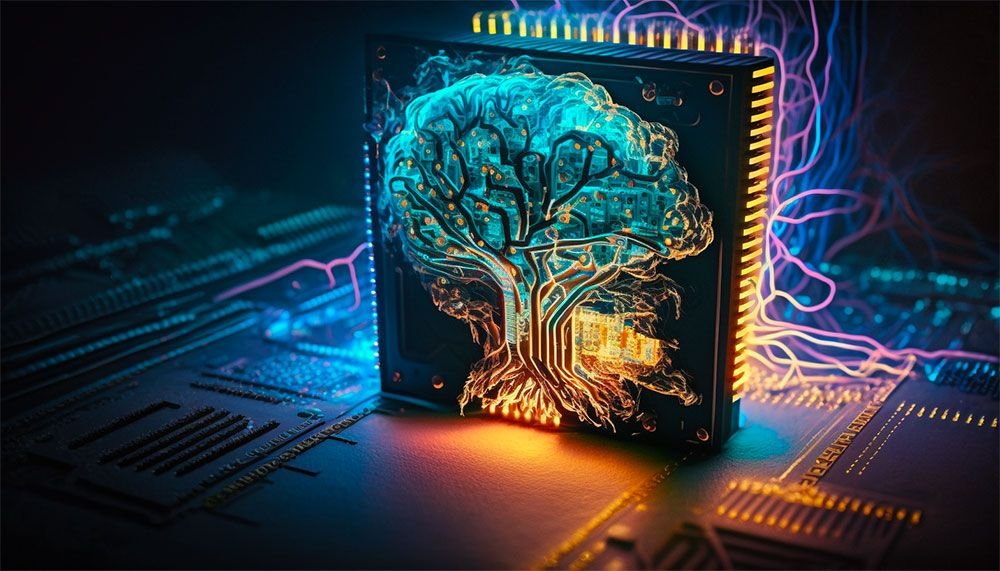Introduction
Artificial intelligence has made tremendous strides in recent years, but conventional computing architectures face inherent limitations. Enter neuromorphic computing, a revolutionary approach that mimics the structure and function of the human brain. Unlike traditional processors, neuromorphic chips are designed to process information in a highly parallel, energy-efficient, and adaptive manner.
By 2035, neuromorphic computing is expected to play a critical role in AI, robotics, autonomous systems, and edge computing. This article explores the science behind neuromorphic chips, their applications, benefits, challenges, and the future impact of this brain-inspired technology.
Understanding Neuromorphic Computing
Neuromorphic computing is inspired by the brain’s neural networks. These chips are built with artificial neurons and synapses that emulate the behavior of biological neurons. This design allows them to process sensory data, recognize patterns, and learn from experience, all while consuming significantly less power than conventional processors.
Unlike traditional CPUs or GPUs, which process tasks sequentially, neuromorphic systems process data in parallel, enabling real-time learning and adaptation. This makes them ideal for tasks such as image recognition, speech processing, autonomous navigation, and anomaly detection.
Applications in AI and Robotics
Neuromorphic chips are particularly well-suited for AI applications requiring low-latency and energy-efficient computation. Robots equipped with neuromorphic processors can navigate complex environments, make split-second decisions, and interact safely with humans. Drones and autonomous vehicles can process sensor data locally, reducing dependence on cloud computing and improving reliability in real time.
In AI, neuromorphic systems excel at tasks such as pattern recognition, natural language processing, and predictive analytics. They can perform these tasks faster and more efficiently than traditional architectures, opening the door to more advanced, adaptive AI systems.
Energy Efficiency and Edge Computing
One of the most significant advantages of neuromorphic computing is energy efficiency. Traditional AI models require massive computational power and energy, especially for training deep neural networks. Neuromorphic chips, by mimicking brain-like computation, drastically reduce energy consumption while maintaining high performance.
This efficiency makes them ideal for edge computing, where devices process data locally rather than relying on cloud infrastructure. Applications include smart cameras, wearable devices, and IoT sensors that need rapid, low-power computation without constant internet connectivity.
Challenges and Considerations
Despite their promise, neuromorphic chips face technical and practical challenges. Designing hardware that accurately emulates neural behavior is complex, and programming neuromorphic systems requires new algorithms and software paradigms.
Scalability, fabrication costs, and integration with existing technologies also present obstacles. Moreover, the lack of standardized frameworks can slow adoption, while ethical considerations arise regarding AI systems making autonomous decisions in critical applications.
The Future of Neuromorphic Computing
By 2035, neuromorphic computing is expected to be an integral part of AI, robotics, and edge devices. Chips will become more powerful, energy-efficient, and capable of real-time adaptive learning. Applications in healthcare, autonomous systems, cybersecurity, and industrial automation will expand significantly.
Neuromorphic technology may also catalyze the development of more general artificial intelligence, bridging the gap between narrow AI and systems capable of human-like learning and problem-solving.
Conclusion
Neuromorphic computing represents a paradigm shift in processing technology, inspired by the efficiency and adaptability of the human brain. Its applications promise faster, smarter, and more energy-efficient AI systems, transforming robotics, autonomous devices, and edge computing.
While technical and ethical challenges remain, the ongoing development of neuromorphic chips has the potential to redefine the future of AI. By 2035, brain-inspired computing could become the backbone of intelligent systems, enabling machines that think, learn, and adapt more like humans than ever before.

